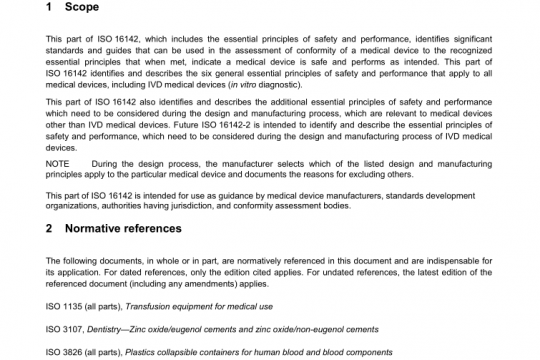AAMI RD47 pdf free download
AAMI RD47 pdf free download.Reprocessing of hemodialyzers.
5.2.2 Documentation
Each person performing procedures for the multiple use of dialyzers should have successfully completed the dialysis facility’s training course relevant to that person’s task and demonstrated competence in the area covered by his or her training. Successful completion of training should be certified by the medical director or his or her designated representative and recorded in the trainee’s personnel file along with verification of the trainee’s having received the instruction. Retraining is necessary when new procedures are undertaken. Annual reiew of competence is required with appropriate retraining if deficiencies are found.
6 Patient considerations
6.1 Medical issues
An order to reprocess hemodialyzers shall be made by a physician knowledgeable about reprocessing and its medical and economic implications. Because the current human immunodeficiency virus (HIV), hepatitis B, or hepatitis C status of a patient cannot be known with certainty, all staff potentially exposed to the patient’s blood shall observe standard precautions. Dialyzers should not be reprocessed from patients who have tested positive with hepatitis B surface antigens. Precautions for all infectious hazards should be emphasized and included in the reprocessing procedures. Written procedures should stipulate whether and how reprocessing will be done for patients who have shown sensitivity to materials used in the reprocessing of hemodialyzers.
6.2 Patient education
The Centers for Medicare and Medicaid Services (CMS) Conditions for Coverage of Suppliers of End-Stage Renal Disease (ESRD) Services states that all patients in a dialysis facility will be fully informed regarding reuse of dialyzers. Printed material such as brochures describing the facility’s services should contain a statement about dialyzer reprocessing if reuse is performed. National renal organizations may have additional materials available.
7 Equipment
Each piece of equipment used for reprocessing shall be appropriately designed, constructed, and tested to perform its intended task. Types of reprocessing systems vary from sophisticated microprocessor-controlled systems to hand-operated valving systems. Satisfactory operation of manual and automated systems shall be ensured by appropriate functional tests. Strict QA and QC shall be maintained for any type of dialyzer reprocessing equipment. Additionally, complete documentation of system function, operating procedures, potential system failures, and dialyzer-reuse criteria shall be included in the dialyzer reprocessing manual, be known to the operator, and be available for review.
7.1 Water systems
The system providing water for reprocessing shall meet all the requirements for pressure and flow rate for operating the reprocessing equipment under minimal and peak load conditions. Product water used for rinsing, cleaning, filling, and diluting the germicide shall be shown to comply with the chemical and microbiological quality requirements specified in ISO 23500-3, Preparation and quality management of fluids for haemodialysis and related therapies — Part 3: Water for haemodialysis and related therapies. Water bacteriology monitoring shall be carried out where the dialyzer is connected to the reuse system or as close as possible to that point.
7.2 Reprocessing systems
7.2.1 Utility requirements
The quality, pressure, flow rate, and temperature of the water used for reprocessing should be specified in the dialyzer reprocessing manual, established before the initiation of a reprocessing program, and maintained thereafter. The manufacturer’s or designer’s recommendations for the water supply should be followed. Provision should also be made for adequate drains, ,entilation, and electrical power.
7.2.2 Process control testing
7.2.2.1 Dialyzer test methods (11.3) shall be established before clinical use of the reprocessed dialyzers. Verification of tests should be repeated after each significant change in the reprocessing system. For automated systems, adherence to the manufacturer’s instructions can verify the tests. For manual systems, confirmation of the accuracy of the TCV measurement and the membrane integrity test can verify the tests.
7.2.2.2 The test for the concentration of germicide or chemical shall be established before clinical use of the reprocessed dialyzers (11.4.1.6 and 12.3.2). For systems using heat disinfection, a means of verifying the time and temperature of disinfection shall be established before clinical use of the reprocessed dialyzers (12.3). If a chemical is used to enhance heat disinfection, both a test for the concentration of the chemical and a means of verifying time and temperature shall be established.AAMI RD47 pdf download.
Other IEC Standards
-

ANSI AAMI ISO 16142-1 pdf free download – non-IVD medical devices and guidance on the selection of standards
AAMI standards list DOWNLOAD -

ANSI AAMI ISO 16142-2 pdf free download – General essential principles and additional specifc essential principles
AAMI standards list DOWNLOAD


